4 Sports Nutrition
Eating for On & Off Seasons
Brian Gowan; Hailee Dihel; and Manuel Garcia
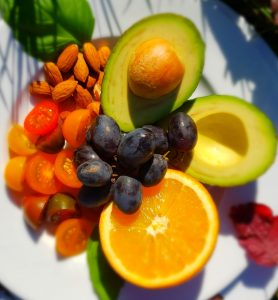
Nutrition to Boost Athletic Performance
The path to a healthy lifestyle can be a confusing and sometimes overwhelming abundance of contradictory information. The desire to achieve and maintain an active and healthy lifestyle may be universal for some, but the way to accomplish those goals can vary for many. Whether we are weekend warriors looking for exercise, outdoor enthusiasts, fitness fanatics, or elite-athletes looking to improve performance on the field, we all need to properly fuel our bodies to reach peak performance and maximize our fitness potential. When our bodies are supplied with the proper nutritional fuel, it is better equipped to meet physical demands, thus enhancing our abilities to reach our fitness goals. However, when combining athletics and performance with nutrition, there isn’t a one-size-fits-all method. No matter our age or athletic ability, the fuel that provides that energy and allows us to perform at optimal levels is nutrition. Not only does nutrition provide us with the energy to perform, but it also allows our body to regenerate and grow after we have broken it down. However, our bodies cannot complete this repair process unless we have the right amount of sleep. It’s this partnership between nutrition and rest that allows our body to function at its highest level. Simply stated, without nutrition, we cannot perform; without rest, we cannot repair.
The following will provide the foundation for the body’s nutritional requirements to perform at its optimal level. It will also provide and suggest ways to further supplement the body to enhance its basic performance. No set guide improves athletic performance without first incorporating proper nutrition, exercise, and rest. But when the right type of nutrition is paired to each person’s need, the body’s demands are more easily met, and performance can be attained to function at full capacity. How you push your body’s physical limits depends on each individual’s goals and how well you are prepared.
.
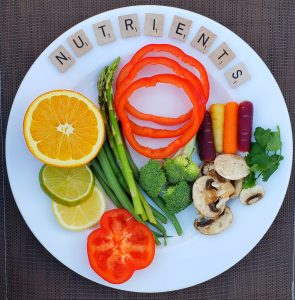
Nutrients for Performance
Fueling the body for activity begins with proper nutrition. When the body has the right amount of nutrients, it can fuel the cells of the body and function at optimal capacity. But what are the necessary nutrients to achieve this state of performance? There are categories of nutrients that define the types of food required for proper nourishment. Our bodies produce nutrients, called non-essential nutrients, and nutrients that our bodies require called essential nutrients. What are these nutrients, and why are they so important in the growth and performance process?
Macronutrients
Consist of Carbohydrates, Proteins, and Fats. These categories of nutrients are required in higher amounts and provide the body with sufficient energy in calories.
Carbohydrates
We fuel our cells with the necessary energy to perform and feed our central nervous system so we can perform. Per the AMDR(Acceptable Macronutrient Distribution Range), this type of fuel should account for 45-65% of our daily caloric intake, which maximizes our glycogen stores in the liver. But how often do these stores need to be replenished? This depends on how frequent the training. It is recommended to replenish at 6-10g of carbs per kg of bodyweight to restore these levels fully. However, if workouts are more frequent, say every 8 hours, they need to be replenished more often at a 1-1.2g/kg bodyweight rate. If workouts are less frequent, consuming the recommended amount of carbohydrates over the individual’s regular eating pattern time frame is acceptable. Replenishment can be further enhanced when carbs are combined with a lean protein source within 2-4 hours of the workout.
Protein
Provides the building blocks of the body and muscle at the cellular level, making them essential to the growth and repair process. All of the substances in your body are composed of proteins. Those proteins are made from amino acids. Some of the amino acids come from food (essential), while others can be produced in the body (non-essential). We need a combination of both types of amino acids to form the complete protein and cellular and muscular growth foundation. However, the protein will not fuel the body unless it is necessary. Carbohydrates and fats provide that primary energy. The amount of protein needed will depend on the frequency and intensity of the workout. The average person should consume plenty of protein in a well-rounded diet. However, higher intensity workouts require higher protein intake to prevent lean body mass loss, especially when weight loss is involved. Protein intake should range between 1.2-2.0g/kg of bodyweight. This should lean to the lower-end when workouts are less than 30 minutes, 5 days a week. Protein increases with the more intense, ore frequent workout that lasts over an hour, 5-7 days/week.
Fats (Healthy)
Omega-3 fatty acids assist our system by supporting micronutrient absorption, cellular growth, and repair and by providing added calories as the energy source. When our body becomes fat-adapted, it learns to use fat as the primary energy source, thus sparing the carbs we have stored to be used later. This is prominent in moderate-vigorous endurance athletes and aerobic-type exercises. They can also function as anti-inflammatory. Inflammation can alter the function of organs and cause pain to the muscles and joints. It can also lead to more serious issues such as cardiovascular disease and immune deficiencies. The Dietary Guidelines recommend 20-35% of the daily caloric intake from these healthy fats.
Micronutrients
It consists of vitamins and minerals to provide the body with the essential components that allow the cells to function properly. Every tissue in the
body is made from cells. When the cells have the proper nutrients to perform their specific function, the body can increase its functional capacity, thus increasing its performance. There are specific micronutrients such as B-vitamins, calcium, and iron essential to promote those functions.
B-Complex Vitamins (B1-Thiamine, B2-Riboflavin, B3-Niacin, B5-Pantothenic Acid, B6-Pyroxidine, B7-Biotin, B9-Folate, B12-Cobalamin)
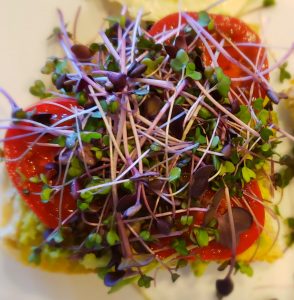
These water-soluble vitamins are essential to energy metabolism in the body. They help the body convert fuel from carbohydrates, fats, and proteins into energy and utilize the stored energy found in the body. When there is a deficit in these vitamins, the body cannot function at its optimal level, which makes building muscle and losing weight even harder.
Calcium
Calcium is critical to fitness due to its ability to aid muscle contraction/relaxation and its component in building bone structure and mass. It also supports the Central Nervous System by building and supporting the messaging center from the brain to the body, which allows the body to perform specific functions. Calcium is also necessary for proper cellular function and regulation. Having the proper amount of calcium in the body allows specific nutrients into and out of the cell so the body can reach optimal performance.
Iron
Iron is an element that has many metabolic functions but is specifically critical to blood production. It is found in red blood cells and is necessary for red blood cell production and the transport of oxygen from the lungs and to the tissues throughout the body. Hemoglobin is the oxygen-carrying component of that blood. Myoglobin, on the other hand, is found in the muscle cells as opposed to the lungs. It stores the oxygen, releases it, and then transports it to the body as needed. If the cells throughout the body do not have enough oxygen, the tissues that make up the body become oxygen-deprived, a condition called ischemia. As these tissues are further oxygen-deprived and die, organs and systems throughout the body cannot function properly, and these systems eventually fail.
Water
It is important to maintain proper hydration and assure the body functions at its peak ability. The proper fluid balance assures the body to utilize energy and nutrients and assists with ridding of the toxins that build up during intense exercise. Hydration can be affected by factors such as the intensity of the activity, the climate, the duration of the event, and the athlete’s size/weight. The body is approximately 50-70
% of water. The Academy of Sports Medicine suggests 16-20oz of water 4hrs before training and another 8-12oz 15 min before workout best satisfies this need. If you see sweaty-salt on your clothes after a workout, that could suggest a loss of sodium. Adding a dash of salt to the water before training may help sustain sodium that is lost. This added mineral can help the cells retain water/hydration and support electrolyte fluid balance in the body. Monitor your hydration level by weighing yourself before and after your workout. For every pound of body weight lost after a workout, replenish with 1.5 times the amount of fluids afterward. Remember, the food you eat before and after a workout contributes to your hydration levels. Consuming plenty of fruits and vegetables throughout the day can provide added hydration as well as nutrition.
When the body becomes overheated, it has lost its ability to cool properly. This can also be due to dehydration. The body cools itself through sweating and evaporative cooling. If the body is properly hydrated, it can sweat, thus cooling the body with the outside ambient air. In a hot and dry climate, the body sweats and evaporates rapidly. The lack of perceived sweat may cause one to think they are not hot enough to sweat until it is too late. In contrast, an extremely hot and humid climate can prevent the body from sweating due to the excessive moisture in the air, hindering the body’s ability to cool itself properly. When the body lacks hydration, it’s unable to cool, and the core body temperature increases, causing heat-related illnesses such as heat cramps, heat exhaustion, and heatstroke.
If a workout lasts less than an hour, replenish with water.
If a workout lasts more than an hour, replenish with a sports drink or electrolyte beverage.
Sleep
Is one of the most under-utilized workout tools at our disposal. The body needs time to repair, regenerate, and grow. This can only happen by providing the body with the proper amount of rest. This allows the body time to decrease cortisol levels and reduce the stress on the body that can hinder mental and physical recovery. It is recommended that 7-8 hours of good, deep sleep per night be achieved.
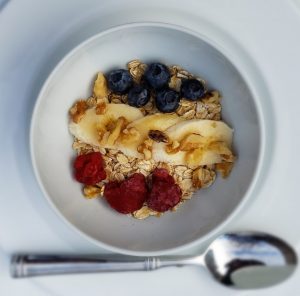
Foods to Fuel Activity
The common factor for athletes of all levels is to maintain a healthy and nutritious diet. Supplying the body with a well-rounded variety of fruits, vegetables, high-quality carbs (whole grains), lean proteins (meats, fish, poultry, beans), and healthy fats (nuts, seeds, oils) will provide the energy and fuel to support activity at any level. The duration and intensity of exercise will determine how much of these foods are required to sustain the energy needed to maximize individual performance and maintain muscle mass. But what is the best time to eat these foods to fuel activity?
The right balance of carbs and protein can affect energy levels before a workout. Foods such as bananas, berries, oranges, nuts, and peanut butter provide vitamins, minerals, and water for hydration and carbs, proteins, and fats. This can help sustain energy levels throughout the workout. The key is finding the right balance that provides the energy but doesn’t leave you feeling hungry or full.
A short but high-intensity workout will utilize glycogen stores from the liver and muscles as the primary energy source. As the workout increases in duration, the body needs to replenish these stores by adding additional carbs. Eating pre-workout protein has been shown to increase muscle performance, growth, and recovery. If competing in a longer and lower intensity workout, fats are the primary fuel for performance. The timing of the meal depends on the timing of the workout. It’s better to eat a larger, more complete meal approximately 2-3 hours before the workout or training. The closer to the workout, the smaller the meal or snack while maintaining a light carb and protein balance. Examples of pre-workout meals and snacks are listed below.
Pre-workout (2 hours+)
- Eggs / toast / avocado / fruit
Pre-workout (<2hours)
- Oatmeal with fruit / banana / nuts/ seeds
Pre-workout (<1 hour)
- Yogurt/fruit
- Protein Bar
- Fruits: banana / apple / orange
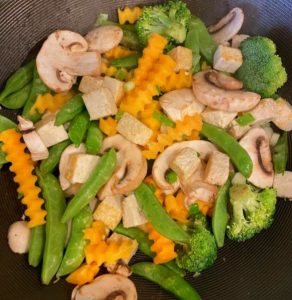
Post-Workout Essentials
The body has been broken down, energy stores have been utilized, and the body needs to be replenished. What is the best food to fuel the body’s repair and recovery? As earlier stated, the body utilizes glycogen stores as energy, and they need to be replenished. The proteins in the muscle also get depleted and broken down. To restore these glycogen reserves and repair the muscle breakdown, the food utilized and lost as energy is also used to refuel the body and enhance recovery.
The level of muscle tissue breakdown depends on the extent of the exercise/training. More tissue breakdown requires more fuel for repair. The right amount of protein can aid this repair by providing the necessary amino acids to not only repair damaged muscle but build new and stronger muscle. Studies show that approximately 20-40g of protein after a workout provides the necessary building blocks to maximize the body’s repair system. The body can best recover when this protein is restored within a two-hour window. The International Society of Sports Nutrition recommends to consume 0.5g of carbs per pound of body weight and approximately 0.14-0.23g per pound of protein within 30 minutes to restore glycogen stores and adequately repair muscle breakdown effectively. These levels can increase with the intensity and/or duration of workouts. Foods to consider include plant-based protein powder, eggs, Greek yogurt (dairy), chicken, tuna, or a protein bar. The level of activity also determines the number of energy stores used by the body. The longer endurance sports cause the body to use more glycogen than a short-term resistance training session. These carbs need to be replenished as well so they can be utilized for the next workout. These are best utilized by the body when ingested within 30 minutes after training to maximize this storage. Examples include chocolate milk, fruits, leafy green vegetables, oatmeal, rice, or pasta.
The best way to maximize the benefits of proteins and carbs is to consume them at the same meal. This is especially important if training and exercise are more frequent with fewer days of rest. A ratio of approximately 3:1 carbs-to-protein can stimulate glycogen and protein synthesis and better prepare the next activity’s body.
There are many ways to meet those nutritional requirements to achieve and maintain personal fitness goals. How those requirements are met can impact one’s performance and contribute to success or failure, but the individual determines the choice. We are not the same. We have different athletic abilities and our nutritional needs and physical demands can vary according to our individual and specific goals. Having a plan and the proper nutritional information only makes it easier to improve performance and be more successful.
Activity to Utilize Energy
We have discussed the types of nutrition to fuel the body to perform at its peak potential, but now that we have the nutritional component established, how do we combine it with physical activity to maximize the benefit? To obtain a desired level of fitness, the body must be challenged. The demands on the body and breakdown of muscle must be increased so it can rebuild bigger and stronger. This leads to increased muscle size, strength, and endurance. Three exercise types are the foundations for building fitness. The following will briefly describe and explain the function of each.
Aerobic Exercise
- Incorporates larger muscle groups with repetitive actions to enhance the body’s utilization of oxygen and the building of cardiovascular performance.
- Activities include hiking, running, biking, swimming.
Resistance Training
- Involves the musculoskeletal system by utilizing exercises that involve lifting, pushing, and pulling against resistance. Muscular fitness can be better achieved with heavier weight and fewer repetitions, while muscular endurance can be achieved with lighter weight and increased repetitions.
- Activities include sit-ups, push-ups, pull-ups, and weight training.
Stretching
- Increases the muscle’s ability to flex, extend, and lengthen. This can assist in the prevention of muscle-based injuries and provide the body with stability and strength.
- Activities include yoga
The FITT (Frequency, Intensity, Time, Type) acronym can be used to better organize the type of workout for each individual.
The FIIT Principle assures that appropriate load-bearing activity can occur to maintain muscle and fitness levels and reach the desired gains.
Frequency
- How often is the workout being performed? Fewer than 5 days/week or greater than 5 days/week?
- The Physical Activity Guidelines of America suggest
- 150 hrs/week of aerobic training as a baseline minimum
- 3-6 days/week to achieve and maintain cardio-fitness
- 2-3 days/week to achieve muscular fitness
Intensity
Low to Mild Intensity
- Includes activities that mildly increase cardiac and respiratory rate and can be performed while holding a conversation.
- Activities include walking, cleaning, everyday activities.
Moderate Intensity
- Activity that increases demand on the body and increases the heart’s workload to 50-70% of its capacity.
Vigorous Intensity
- Increases the workload by increasing heart rate to 70-85% of its capacity and increasing respiratory rate
Competitive Intensity
- Activity that increases the workload of the heart to 80-90%
Calculate Your Training Capacity
- Calculate your maximal heart rate with a simple equation.
- (220 – age = maximal heart rate / minute)
- Calculate your heart rate in the form of a percentage.
- (220 – age = max heart rate, then multiplied by the percent you wish to find)
- Example: What is 70% of my maximal heart rate?
- (220 – age = max heart rate X .80 = 80% of your max heart rate in beats/minute)
Time
The Physical Activity Guidelines of America suggests a moderate-to-vigorous exercise for 30 min/day
-
-
150 minutes/week of moderate exercise
-
75 minutes/week of vigorous exercise
-
2 days/week of all muscle groups
-
Type
- Hike, run, swim, weights
HIIT: High-Intensity Interval
Strategy to incorporate short-bursts of intense-aerobic activity followed by brief episodes of rest or lower impact exercise. This efficient use of energy over a short period of time has been shown to increase metabolism by burning more calories, maintaining a higher metabolic rate, increasing fat loss, and efficiently improving oxygen consumption. Workouts generally range from 30-60 minutes and utilize fat as the primary energy source.
For more information on health and nutrition, please visit the following links:
www.healthline.com/health/fitness-exercise
Let’s Talk About IV Therapy
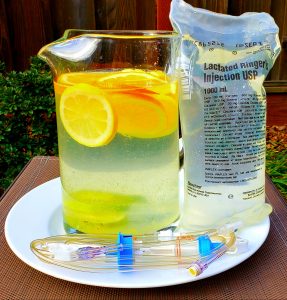
When you hear the term Intravenous (IV) fluid prescription, you might automatically think “hospital.” However, in the past few decades, the idea behind the IV fluid prescription has widely been developed to be used outside a hospital setting. Many doctors’ offices, especially those who practice naturopathic medicine very familiar with IV Therapy. Within the past few years, we see IV Therapy become more popular. Anyone who is an active enthusiast or an athlete may benefit and enjoy receiving an IV Therapy Treatment. Do you ever find yourself super dehydrated or extra exhausted after a workout? IV therapy can treat many different symptoms that you may experience.
Taking Care of Your Body
IV infusions with the right combination of vitamins, minerals, and electrolytes can help deliver effective doses of essential nutrients directly to the cells where they’re needed. Do you ever feel like your digestive system gets overly worked? IV therapy is gentle on the digestive system. When you take large doses of magnesium or certain vitamins, it can cause diarrhea, cramps, or other intestinal issues. IV vitamin infusions increase the blood concentration of vitamin C and other powerful antioxidants without the side effects associated with drinking your supplements.
When an athlete is in the recovery stage of their performance, the faster an athlete can re-hydrate, the better off they are. Muscle recovery can be delayed if you’re dehydrated. It is important to replenish any lost fluid after a tough workout or performance. However, the effort can be tricky. During hard workouts or races, blood flow to the stomach is redirected to the muscles. When this happens, the reduction in blood flow to the stomach results in a decrease in the ability to digest and absorb nutrients. An IV can bypass the GI tract helping re-hydration happen at a faster rate. This is because all of the nutrients can go directly into the bloodstream. Ever try to drink a gallon of water right after you run a marathon? You might become nauseated and even vomit. When you drink water, you may feel replenished, but it’s mainly the effect of rehydrating your tongue and throat tissues. Your body actually absorbs water through the large intestine, so it may take hours before all the tissues in your body benefit from the fluid you just drank.
A Colorado Springs-based exercise scientist, Carwyn Sharp Ph.D., has studied the impact of nutrition on recovery in athletes and says oral hydration is sufficient for proper recovery in most cases. But when an athlete is very dehydrated, agrees that IVs can boost recovery.
Nutrients in the IV
What exactly is in the IV that is being given? Several different options are available when it comes to specific solutions and bags. According to Winona Ball, a Nursing Advisor with over 30 year’s experience and a Masters Degree in Health Sciences, the most common choice is normal saline, which consists of sodium chloride and dextrose to form a sugar solution. Dextrose is common among athletes as it is a sugar that is easily digestible in your body. It is a molecule that is taken up into muscles and aids in restoring glycogen and providing energy for the recovery process by helping build new proteins in your body.
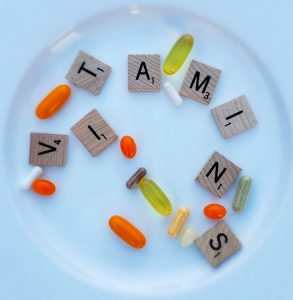
Additional nutrients can be added to each bag, regardless of the original solution you choose. It can be as custom as one would like to fit each need. A popular add-in is Vitamin B12, a water-soluble vitamin that supports the body’s nerve and blood cells. When a person takes B12, their body will only use what is needed. If your body already has a sufficient amount, it is flushed from your system naturally. Another add-in to help with recovery are amino acids. An amino acid is an organic compound that helps build muscles by forming proteins. Additional amino acids can help assist in recovery, especially after high stress or high endurance exercise. The ability to directly administer nutrients and vitamins immediately after competing has become a popular choice in preventing injuries and illnesses among athletes.
Benefitting Your Performance
Every athlete has a sense of competitiveness. Whether you are a professional athlete, high school athlete, or just working out with peers in a group exercise class, we all sometimes tend to push our bodies to the max. We set high goals for ourselves and want to achieve the fastest sprint, the most passes or goals, the fastest time, or the heaviest weights. How much can our bodies really handle without first increasing the nutrients and vitamins to fuel a more intense performance? Our muscles can become fatigued, stretched, and overworked quicker than we may realize. Exercise can lead to a gradual buildup of free radicals. Free radicals can be harmful to the body when interacting with certain types of molecules in your body. Free radicals can cause DNA damage, impairing cellular function, or killing cells altogether. Damaged cells open the doorway to potential disease and illness. Here is where antioxidants come into place. Antioxidants are stable molecules that bind to free radicals, stopping potential damage and assisting in removing free radicals from your body. Amino acids are the building blocks of protein that our bodies require., They can be added to our IV bag to offset the extra strain our muscles and tissues undergo. Below are some of the benefits that athletes can experience if they choose to have an IV solution administered:
- Reduce recovery time
- Help with muscle recovery.
- Provide fast hydration and rehydration
- Keep our muscles and tissue healthy and balanced.
- Help as a pre-exercise/competition boost.
Risks Associated with IV Therapy
Of course, you will have risks. There is a risk with anything you do when it comes to having an IV inserted. The line has a direct path into your bloodstream and bypasses your body’s main source of protection, the dermis. Although the risk of infection is unlikely, it’s important to consult with a licensed medical professional who will perform the therapy to manage this risk and ensure you have a healthy vitamin infusion.
You can also have a risk of receiving too much of a specific vitamin or mineral, which can increase the risk of other effects on your body if you are a patient with kidney disease. Adding too much potassium too quickly could potentially lead to a heart attack. People with certain heart or blood pressure conditions can also be at risk. In general, excessive vitamins and minerals can be hard on a person’s body and organs.
Overall, IV therapy is a fairly new trend that has become quite popular. Many athletes immediately feel better after receiving a bag of fluids. Although it’s not a cure-all, it may be worth the few hundred dollars to keep your body performing at its very best. Would you consider trying IV Therapy to help nourish your body after a hike, run, or basketball game?
For more information on the benefits and risks of IV, Therapy checks out this blog written by the Staff at the infamous Cedars-Sinai Hospital located in Los Angelos, California.
https://www.cedars-sinai.org/blog/iv-vitamin-therapy.html
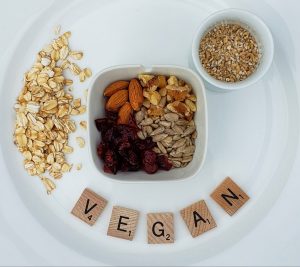
Vegan Choices
When talking about using a vegan diet, I think that I am getting enough nutrients while performing. When I first thought about the idea of a vegan diet, I thought the same as most. I quickly learned that you could get all you need for a proper nutritional diet if you choose to avoid animal-based foods. While researching specifics regarding a vegetarian diet, I learned that you could get the protein you need while you lift weights, including running. When you have daily exercise, you need to eat lots of nutritional meals. If you eat specific greens, that will provide your body energy. Any chance you have to eat a proper diet is great. However, you still need to balance it with swimming and running. An example is weightlifters. You hear of men that can lift extreme weights and then, when asked about their diet, are learned they partake in a vegetarian diet. Why are plant-based foods so good for us? What can we obtain from eating a plant-based diet only? Eating proper greens and clean eating can be healthy if you choose the right sources, and you can obtain a proper nutritional diet without having a steak.
Mental and Physical Fitness
There are plenty of options when it comes to fulfilling our nutritional requirements. Carbs and fats provide the body with energy, while proteins provide the building blocks for our bodies to repair and keep our organs functioning. Nutrition also affects the brain-body connection, which allows us to function at full capacity. Insufficient or improper nutrition decreases the body’s ability to perform and makes us vulnerable to illness and injury. Having a better understanding of how nutrition and fitness work together can optimize health and performance and provide the mental well-being that allows us to push our limits. This can only occur through proper nutrition.
Whichever season we are preparing for, our bodies must be fed the proper fuel to initiate and maximize performance—nutrition, fitness, and hydration work to benefit everyone. By providing the toolsto understand these concepts betters, one can develop a tailored program to specific dietary needs or preferences. The ability to identify nutritional deficiencies may be the key to unlocking new physical goals. It will increase year-round performance and establish and help maintain a lifetime of health and wellness.
References
https://medlineplus.gov/ency/article/002458.htm (Links to an external site.)
Berning JR. Sports nutrition. In: Madden CC, Putukian M, McCarty EC, Young CC, eds. Netter’s Sports Medicine. 2nd ed. Philadelphia, PA: Elsevier; 2018:chap 5.
Buschmann JL, Buell J. Sports nutrition. In: Miller MD, Thompson SR. eds. DeLee and Drez’s Orthopaedic Sports Medicine. 5th ed. Philadelphia, PA: Elsevier; 2020:chap 25.
Thomas DT, Erdman KA, Burke LM. Position of the Academy of Nutrition and Dietetics, Dietitians of Canada, and the American College of Sports Medicine: nutrition and athletic performance. J Acad Nutr Diet. 2016;116(3):501-528. PMID: 26920240 www.ncbi.nlm.nih.gov/pubmed/26920240 (Links to an external site.).
https://www.healthline.com/health/fitness-exercise-eating-healthy (Links to an external site.)
Medically reviewed by Daniel Bubnis, M.S., NASM-CPT, NASE Level II-CSS (Links to an external site.) — Written by Dana Sullivan Kilroy — Updated on February 27, 2019
Medically reviewed by Natalie Butler, R.D., L.D. (Links to an external site.) — Written by Sarah Dalton — Updated on September 29, 2017
Written by Shawn Radcliffe (Links to an external site.) — Updated on October 20, 20180
Nutrition and Athletic Performance, Medicine & Science in Sports & Exercise: March 2009 – Volume 41 – Issue 3 – p 709-731
doi: 10.1249/MSS.0b013e31890eb86
https://www.healthline.com/nutrition/eat-before-workout (Links to an external site.)
Written by Arlene Semeco, MS, RD (Links to an external site.) on May 31, 2018
https://www.healthline.com/nutrition/eat-after-workout (Links to an external site.)
Written by Arlene Semeco, MS, RD (Links to an external site.) on September 20, 2016Sources:
https://pubmed.ncbi.nlm.nih.gov/18834505/
Winona Suzanne Ball
Nursing Adviser, RN | MHS, Governors State University, IL
Full member of the American Nurses Association
https://nurse.plus/meet-our-medical-expert/
https://nurse.plus/become-a-nurse/4-most-commonly-used-iv-fluids/
Are IV Drips the Future of Recovery for Runners?
Megan Hetzel, Dan Fuehrer and Steven Harp. November 24, 2015
https://www.runnersworld.com/news/a20857601/are-iv-drips-the-future-of-recovery-for-runners
Intravenous fluids and their use in sport: A position statement from the Australian Institute of Sport.
Authors: Samantha Pomroy, Greg Lovell, David Hughes, and Nicole Vlahovich
https://www.sciencedirect.com/science/article/pii/S1440244019307741
IV Vitamin Therapy: Your Questions Answers
Healthline Wellness Team
Lindsay Slowiczek, Pharm D, Debra Sullican, Ph.D., MSN, RN, CNE, COI, and Dena Westphalen, PharmD
Video on IV Therapy and Benefits
https://www.youtube.com/watch?v=vRaLwwJ4MPA&feature=youtu.be
Media Attributions
- 20201215_162339 © Brian Gowan
- 20201215_153921 © Brian Gowan
- 20201215_164025 © Brian Gowan
- 20201215_101728 © Brian Gowan
- 20201215_154712 © Brian Gowan
- 20201215_144657 © Brian Gowan
- 20201215_161035 © Brian Gowan
- 20201215_161730 © Brian Gowan

